DJI Mavic 4 Pro vs Mavic 3 Pro: worth the upgrade?
The leading drone brand's prosumer models go head-to-head

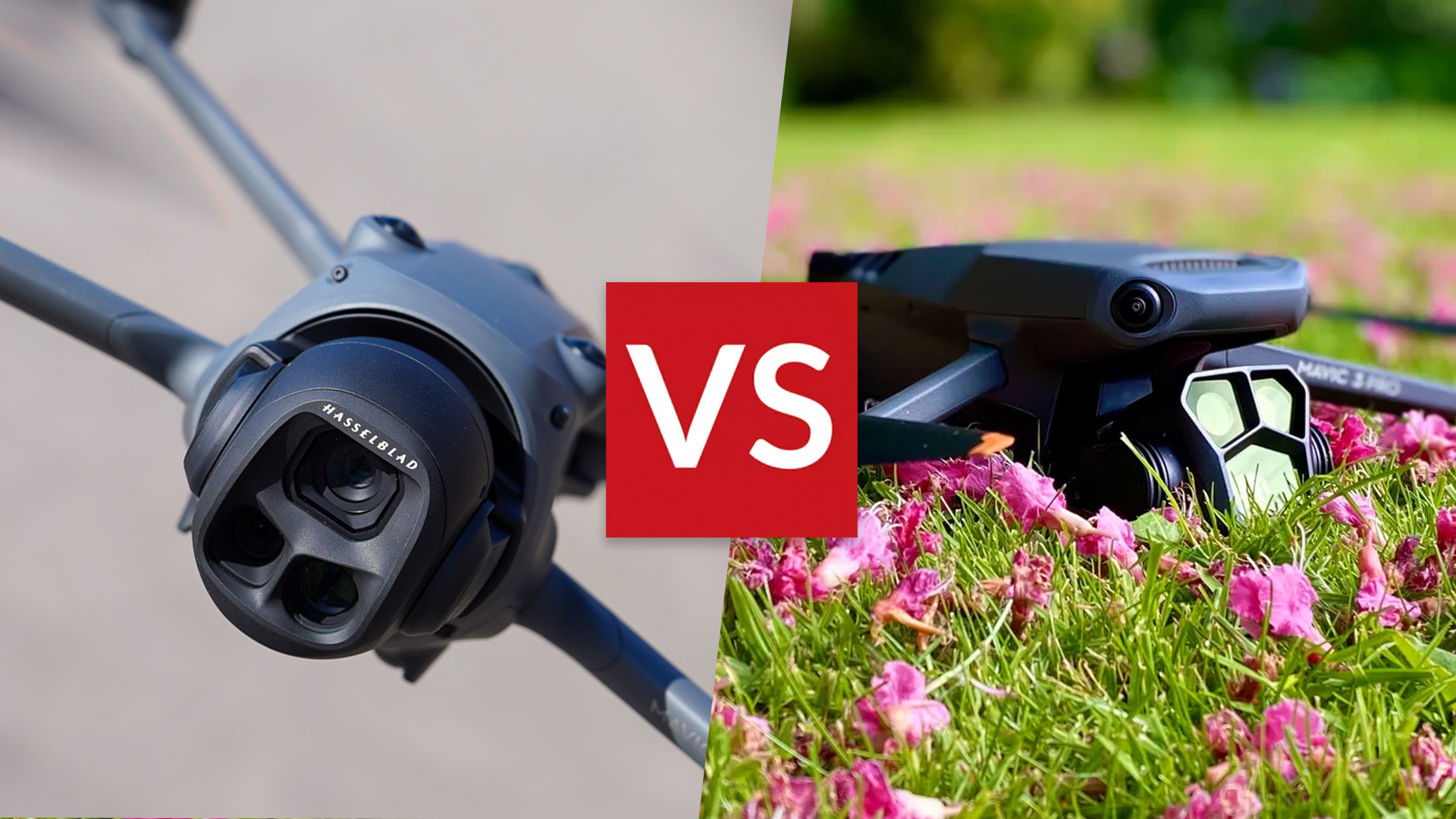
DJI’s been busy releasing entry-level selfie drones in the past 12 months, including the competent DJI Neo and the punching-well-above-its-weight DJI Flip. With the release of the DJI Mavic 4 Pro, the brand firmly reminded us that it's still the king of prosumer camera drones.
That said, the DJI Mavic 3 Pro is an amazing tri-camera UAV, sporting a wide-angle Hasselblad lens, 5.1K video capability, 20MP images, up to 43 minutes of flight time with a single battery, and more, which begs the question: is it worth upgrading to the Mavic 4 Pro?
The short answer to that question is yes, the Mavic 4 Pro is worth the upgrade. Even though it hasn’t reinvented the form factor like the Mavic 3 Pro (which added an extra lens, compared to the DJI Mavic 3), the improvements are significant and could elevate the work of every professional storyteller out there.
After trying both (I've been testing the Mavic 4 Pro for a month), it’s time for the ultimate prosumer drone showdown. Is the new DJI the best drone overall? It certainly is the most capable. Here’s why.
DJI Mavic 4 Pro vs Mavic 3 Pro
Price and availability
The Mavic 3 Pro was launched in May 2023, so exactly two years before the launch of its successor. The recommended retail price for the most accessibly-priced kit (DJI RC) was $2,199 / £1,879 / AU$ 3,099. Even though the drone kept its price high throughout the last couple of years, you can buy it for a little bit cheaper (approx. $/£200) these days.
The Mavic 4 Pro was announced in May 2025 and costs £1,879/ €2,099/ AU$ 3,099. It’s the same original retail price of the Mavic 3 Pro, which is impressive, considering the improvements and general inflation. I’d go out on a limb and say that it might not look like a bargain, for what you get for the money, it really is.
Winner: Same RRP and better features – the Mavic 4 Pro wins this round.
Get all the latest news, reviews, deals and buying guides on gorgeous tech, home and active products from the T3 experts
Design and build quality
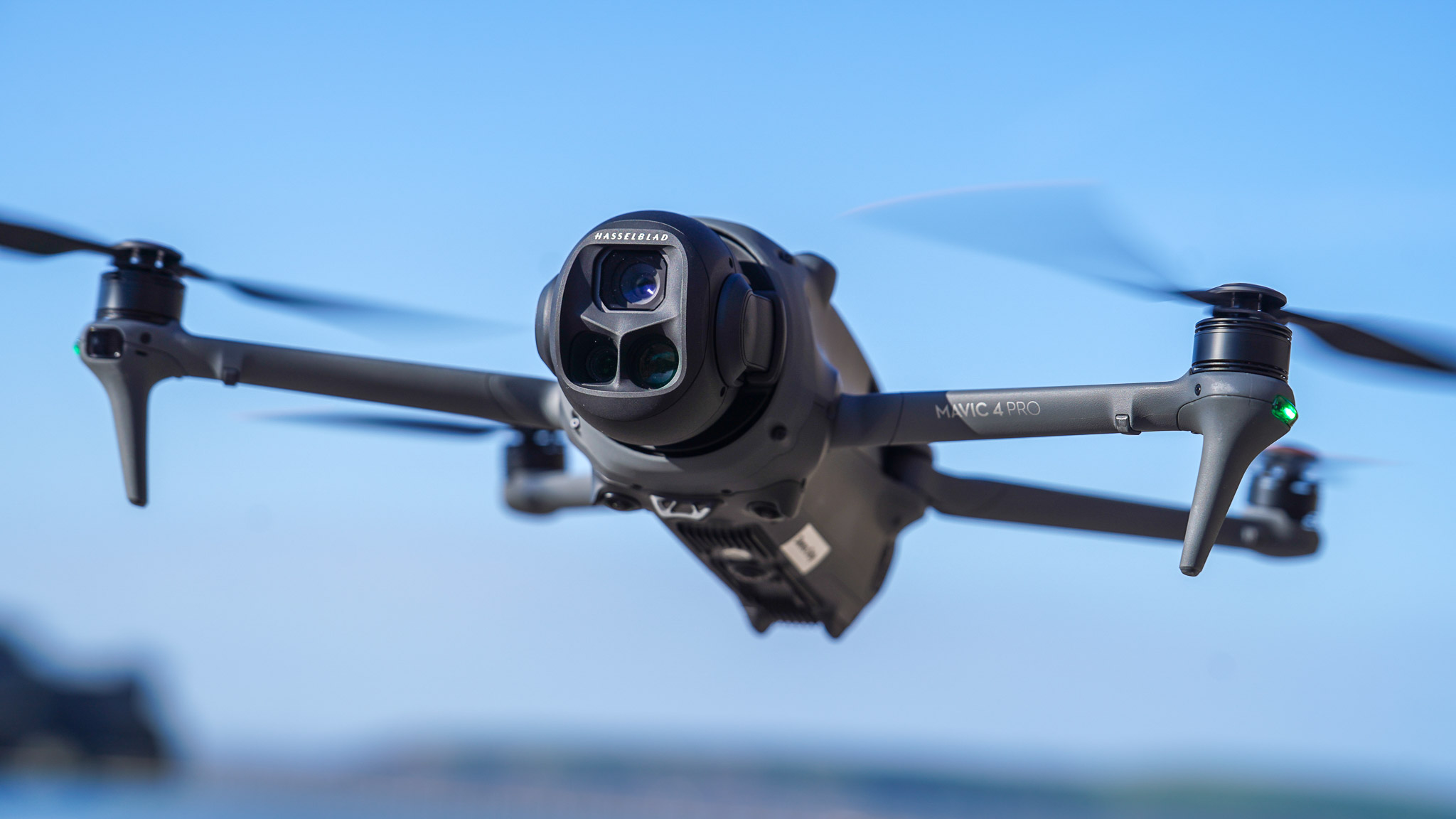
The Mavic 4 Pro in flight
The Mavic 4 Pro kept the three-camera setup but introduced some significant upgrades to the drone's chassis. One of the showstopper features of the new UAV is the ‘Infinity Gimbal’ with a full 360° rotation and 70° upward shots.
To put it in perspective, the gimbal is so flexible that when you rotate the drone in your hands, it looks like those videos when people test the steadiness of birds’ heads. It just doesn’t move, no matter how far you rotate the Mavic 4 Pro’s body.
The drone is now easier to set up and use. Unfolding the arms automatically turns on the Mavic 4 Pro, and the same is true for the RC Pro 2 controller (I’ll talk about the controller in more detail below). The drone itself is slightly larger (both folded and unfolded) and heavier than the Mavic 3 Pro, tipping the scales at 1,063g (vs 958g). It’s not a noticeable difference, and the increased weight certainly doesn’t affect the battery life.
The camera unit (more on this also below) has been swapped around, with the main Hasselblad camera now sitting at the top as opposed to the bottom as it did on the Mavic 3 Pro. The sensors’ positions have also changed; for example, the forward-facing cameras were moved further up the drone, and have been somewhat replaced by a LiDAR sensor.
Winner: better gimbal, LiDAR, better camera unit – it’s a no-brainer the Mavic 4 Pro is a better drone, despite its weight.
Features
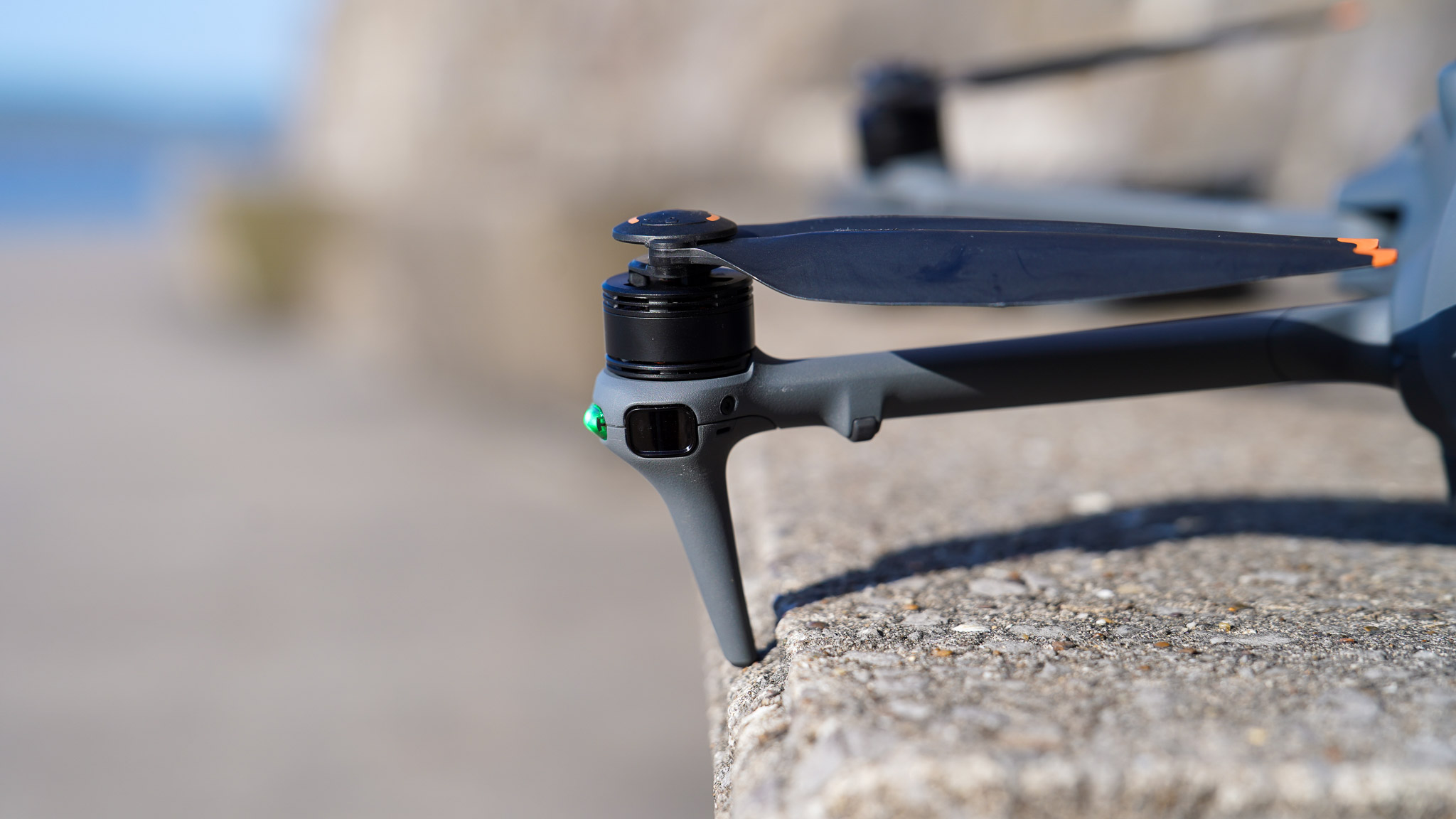
LiDAR sensor on the right arm of the Mavic 4 Pro
Speaking of LiDAR, it’s one of the big-big improvements – the Mavic 4 Pro has one of these on the right arm. I’m sure everyone who’s interested in a Mavic drone knows what the technology is, but just in case someone needs a refresher, it stands for Light Detection and Ranging.
In layman's terms, it's like a super-accurate version of echolocation, but instead of using sound like bats, LiDAR uses laser light to find objects, even in light conditions where everyday optical sensors might fail to recognise them.
This is a big deal, and even though the Mavic 4 Pro only has one of these, it helps the drone avoid dangerous collisions much better than before. It also has six low-light vision sensors (on top of the LiDAR). In comparison, the Mavic 3 Pro has eight optical sensors, but DJI doesn’t recommend using it close to reflective surfaces such as water because that might confuse the sensors. The LiDAR helps the Mavic 4 Pro determine the difference between reflections and actual obstacles better.
Thanks to the 0.1 Lux Nightscape Omnidirectional Obstacle Sensing technology, the Mavic 4 Pro can return to home without GPS. On that note, video transmission range has also been improved (DJI Q4+) to 30km from 15km on the Mavic 3 Pro (which uses DJI Q3+).
Internal storage has also improved from 8GB to a whopping 64GB on the Mavic 4 Pro. The Creator Combo version of the drone has 512GB of storage. Not quite the Mavic 3 Pro Cine’s 1TB SSD, but it’s considerable nevertheless. Internal storage can be expanded with MicroSD cards, of course.
Winner: better night-time performance, faster obstacle avoidance speed, more storage; chalk another one up for the Mavic 4 Pro.
Controller
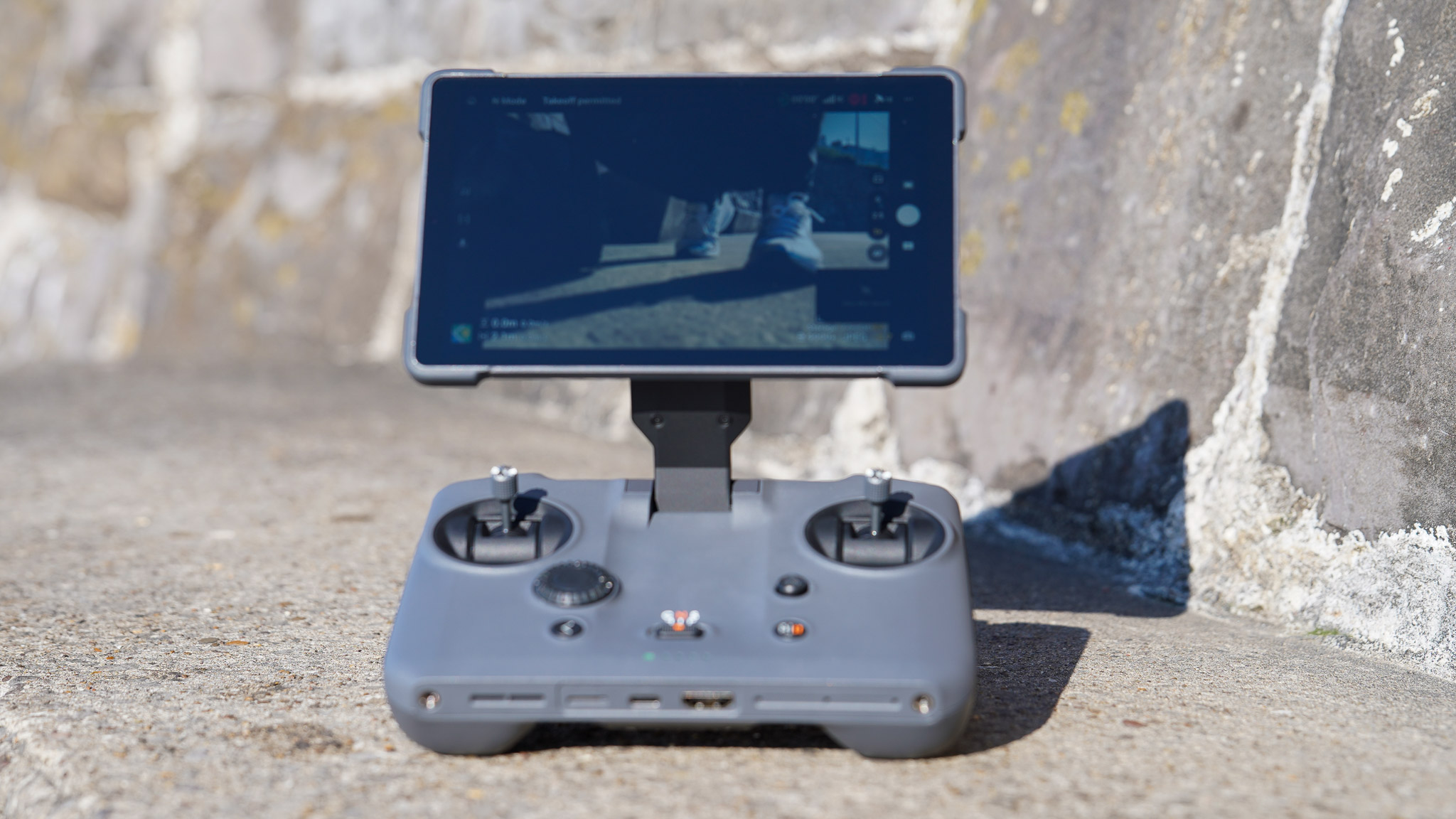
The DJI RC Pro 2 is a real showstopper
The Mavic 4 Pro introduces a new controller, the DJI RC Pro 2 – I was almost more excited to try it than the drone itself! It solves one of my biggest griefs with controllers, namely that you need to screw and unscrew the control sticks every time you use the drone. The RC Pro 2 solves this by folding the sticks down when you close the display. Magic!
Unfolding the Mini-LED screen automatically starts up the RC Pro 2, similarly to how the Mavic 4 Pro will start up when you unfold the arms. The display is not only larger than before (7” vs 5.5”) but it’s also brighter (2,000 nits peak brightness vs RC Pro’s 1,000 nits) and reflects true D-log colours. Plus, it can be rotated (and tilted!) to use as a vertical display for better framing.

The Mavic 3 Pro with the RC Pro controller
Battery life has been increased from three to four hours, and internal storage capacity went from 32GB to 128GB. The RC Pro 2 now also has a built-in, and you can use DJI mics, such as the versatile DJI Mic Mini, to record audio while you fly the Mavic 4 Pro.
The RC Pro 4 introduces the dynamic home point, which follows the controller around, making car filming more accurate. The aforementioned DJI Q4+ transmission for up to 30km is also enabled by this controller and its “enterprise-level multibeam high-gain antennas.”
Winner: The DC Pro 2 is an impressive controller with all the features a professional pilot would expect.
Optical performance and quality

The tri-camera setup of the Mavic 3 Pro
The Mavic 3 Pro introduced the tri-camera setup, with a Hasselblad wide-angle camera (FOV: 84°, Format Equivalent: 24 mm, Aperture: f/2.8-f/11), a medium tele camera (FOV: 35°, Format Equivalent: 70 mm, Aperture: f/2.8) and a tele camera (FOV: 15°, Format Equivalent: 166 mm, Aperture: f/3.4).
An interesting feature to note is that these aren’t just lenses but separate camera units with their respective sensors. The Hasselblad camera has a 4/3 CMOS (Effective Pixels: 20 MP), the medium tele camera has a 1/1.3-inch CMOS (Effective Pixels: 48 MP), and the tele camera has a 1/2-inch CMOS chip (Effective Pixels: 12 MP).
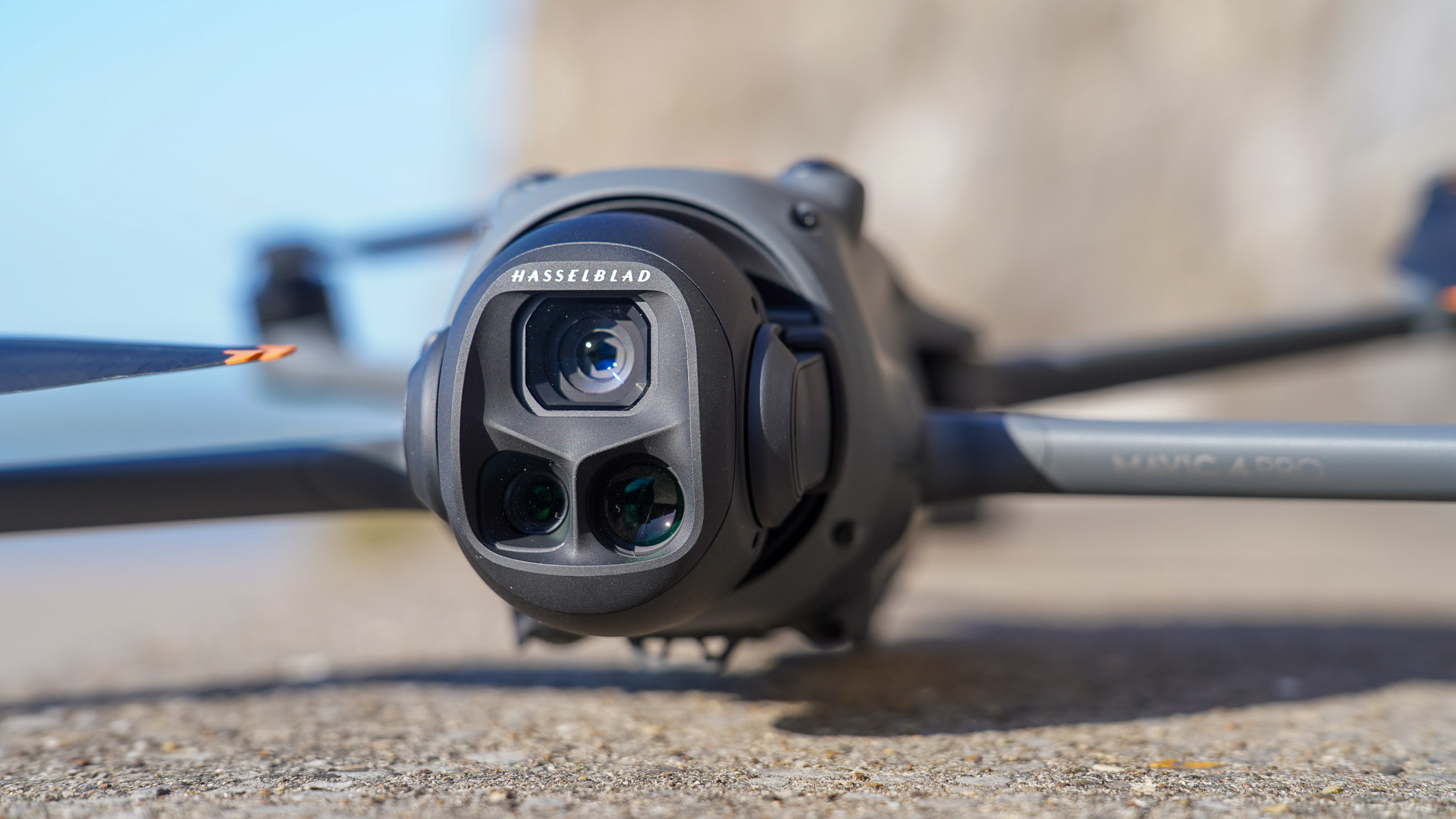
The Mavic 4 Pro has a similar setup but a different design
In comparison, the Mavic 4 Pro also sports a tri-camera setup, but the performance of the cameras has changed. The Hasselblad Camera now has a 72° FOV (Format Equivalent: 28 mm) and is brighter than before (Aperture range: f/2.0 to f/11). The medium tele’s specs are the same (FOV: 35°, Format Equivalent: 70 mm, Aperture: f/2.8), but the tele camera is also brighter (Aperture: f/2.8) and can zoom in a bit more (Format Equivalent: 168 mm). The latter has the same FOV as the Mavic 3 Pro (15°).
Two of the three cameras have a new chip, including the Hasselblad’s 4/3 CMOS sensor that now has a maximum resolution of 100MP but can also shoot 25MP still, too. DJI claims it's a mirrorless-level lens! The 168mm tele camera also has a new 1/1.15” chip.
Admittedly, footage produced by the Mavic 3 Pro is far from terrible; DJI has always been famous for its crisp, high-definition imagery. The Mavic 4 Pro takes it up a notch by refining (and often increasing) the quality of both the images and videos. Max ISO went up from 6,400 to 12,800 (Normal mode) and shutter speed to 1/16,000 from 8,000 on the Mavic 3 Pro.
As mentioned before, the maximum resolution of the Hasselblad and tele cameras increased significantly, but the medium tele stayed the same. Slow Mo modes have been improved on both the medium tele and tele cameras (4k/120fps and 4k/100fps, respectively).
Winner: It’s quite clear that the Mavic 4 Pro is a better option for pros than its predecessor.
Battery life
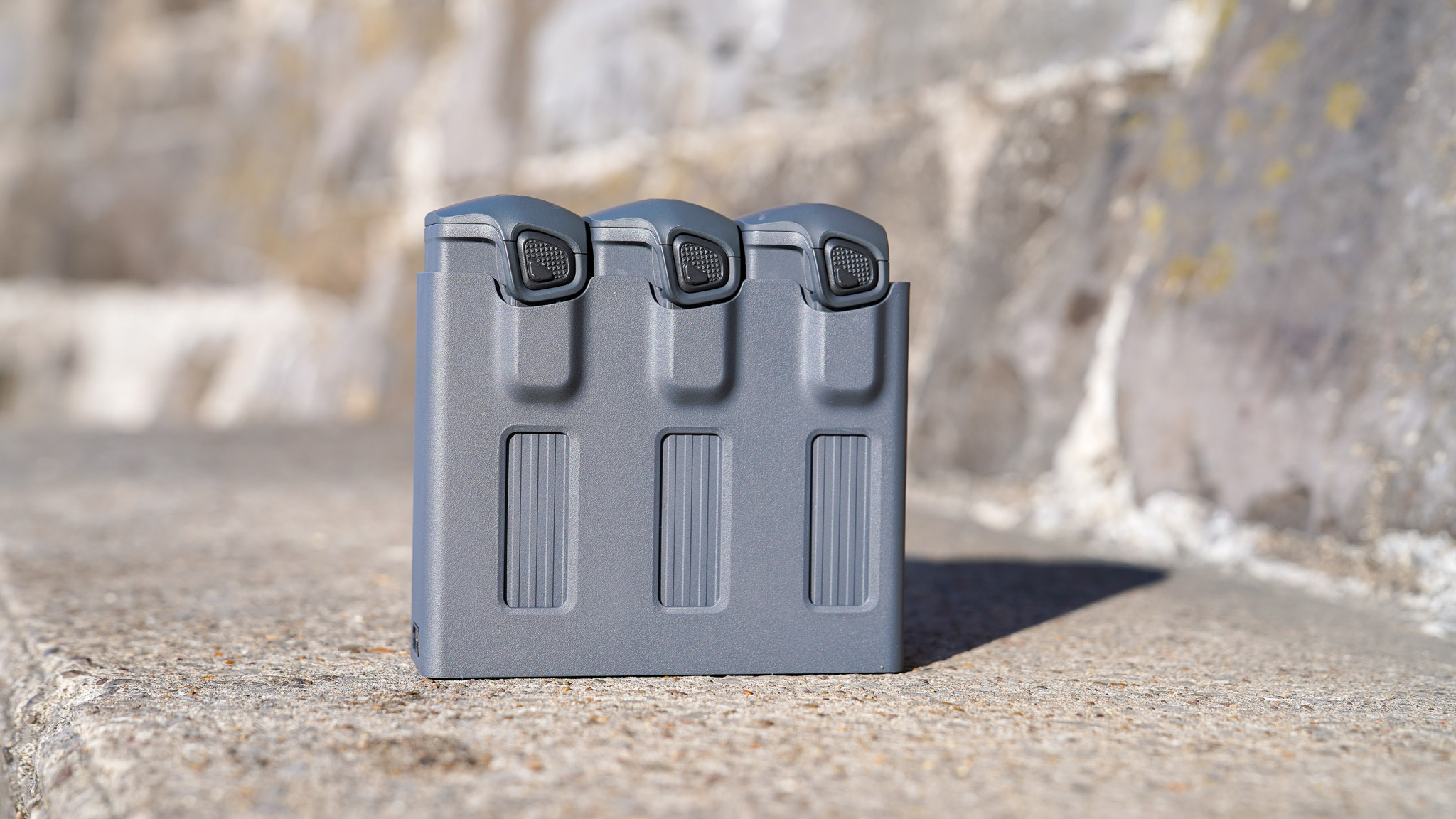
The Mavic 4 Pro's new parallel charging unit
Battery life is often a deciding factor when choosing a prosumer drone, and DJI’s latest flagship makes a strong case for itself. The DJI Mavic 3 Pro, with its 5,000mAh (77Wh) battery, offers up to 46 minutes of flight time in ideal conditions, with hovering capped at around 40 minutes.
In real-world scenarios, users typically see between 23 and 28 minutes, depending on wind conditions and how intensively the camera is used. It's solid, but not exceptional compared to newer rivals.
The Mavic 4 Pro builds on that with a significantly larger 6,654mAh (95.3Wh) battery, giving it an advertised flight time of up to 52 minutes. Crucially, it's not just about capacity; its redesigned power system delivers better energy efficiency, allowing longer flights without adding bulk.
In fact, despite its bigger battery, the Mavic 4 Pro's battery weighs just 332g, slightly lighter than the Mavic 3 Pro’s 335.5g pack. That means more time in the air with no extra weight penalty, a win for anyone shooting longer sessions or covering greater distances in a single flight.
Winner: The Mavic 4 Pro's battery lasts longer and weighs less. No brainer.
Verdict

DJI MAvic 4 Pro: a force to reckon with
There isn’t a single category where the Mavic 3 Pro outdid the Mavic 4 Pro. If anything, the improvements are so significant that they make the drone’s predecessor pale in comparison. It’s true that two years have passed since the launch of the Mavic 3 Pro, but even with that taken into account, it’s hard to deny the superiority of the Mavic 4 Pro.
There really is only one area where the Mavic 4 Pro isn’t better: weight. Otherwise, you get a much better drone for the same recommended price as the Mavic 3 Pro. (Of course, there might be some deals coming on that model soon, now that the Mavic 4 Pro has been announced.)
Should you upgrade to the Mavic 4 Pro from the Mavic 3 Pro? If you’re a professional who uses the drone for work, I’d say it’s almost essential you get the new version. It’s safer to fly and allows for more creative freedom thanks to its updated camera system.
If you’re an enthusiast, you might not want to rush that much. The Mavic 3 Pro is an impressive drone with pro-grade features, but it’s a big financial commitment. Getting the Mavic 4 Pro would be a big investment, especially if you’re only shooting videos for social media (and your pleasure).
One thing is certain: the DJI Mavic 4 Pro is an impressive camera drone with serious specs that’ll make even Mavic 3 Pro owners green with envy. Whether that’s enough for pilots to open their wallets is yet to be seen.

Matt Kollat is a journalist and content creator who works for T3.com and its magazine counterpart as an Active Editor. His areas of expertise include wearables, drones, fitness equipment, nutrition and outdoor gear. He joined T3 in 2019. His byline appears in several publications, including Techradar and Fit&Well, and more. Matt also collaborated with other content creators (e.g. Garage Gym Reviews) and judged many awards, such as the European Specialist Sports Nutrition Alliance's ESSNawards. When he isn't working out, running or cycling, you'll find him roaming the countryside and trying out new podcasting and content creation equipment.
You must confirm your public display name before commenting
Please logout and then login again, you will then be prompted to enter your display name.